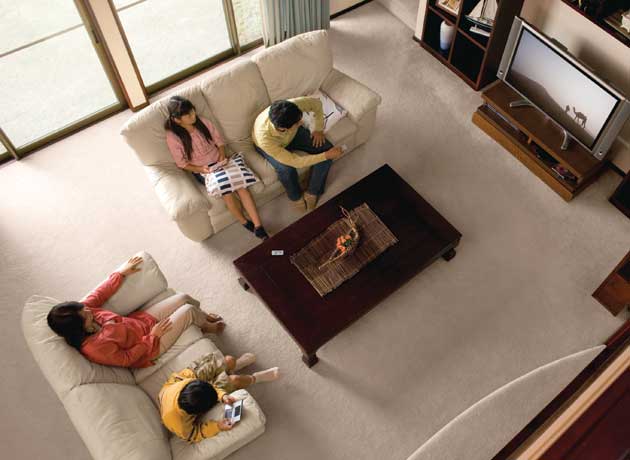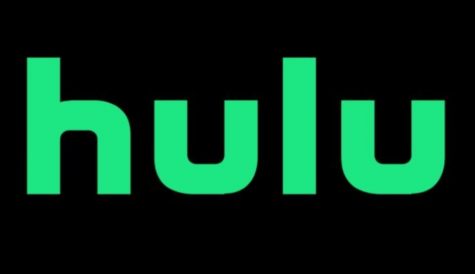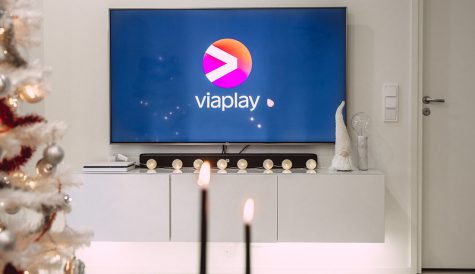The fast set
Cable operators are now rolling out DOCSIS 3.0-based ultra-fast broadband, but they need to find ways to make it pay. Could delivering video and data over managed home networks be the next big thing? Stuart Thomson reports.
Spurred on by competition from fibre network operators (or by the desire to stay ahead of competition from DSL-based providers), cable operators have begun rolling out DOCSIS 3.0-based ultra high-speed broadband services.
Until now, cable operators have felt their way, trying to work out business models for high-speed services and even delaying launches when competitive situations they faced did not warrant an immediate rollout.
Despite wariness on the part of some operators (not least because the history of broadband deployments has shown that customers expect more for less – or at least the same price as before), a number, including (in Europe) Virgin Media in the UK, Numericable in France, Ono in Spain and Welho in Finland, have moved ahead and launched services.
“It certainly hasn’t been slower than expected,” says David Keeley, chief technology officer, home and networks division, EMEA at infrastructure provider Motorola. “Chipsets have only become available recently from the major vendors.” Keeley says Motorola has been involved in several trials and rollouts, including that of Virgin Media in the UK. “The cable operators have seen it as a huge opportunity to get an advantage over [telecom providers] with DSL,” says Keeley.
Charles Cheevers, chief technology officer at broadband technology supplier Arris, agrees that operators in North America and Asia as well as Europe have been installing DOCSIS 3.0 headends quite aggressively.
Commercial strategies
Commercial strategies vary widely from operator to operator. Some view DOCSIS 3.0 within a wider context of upgrading existing broadband customers across the board to higher speeds, migrating their users to DOCSIS 3.0 modems whether they subscribe to an ultra high-speed service or not. According to Cheevers, this is putting pressure on operators to maximise the efficient use of their overall spectrum. Early-phase overlay networks (which required a separate DOCSIS 3.0 network running in parallel with the DOCSIS 2.0 network) have given way to standards-based systems where bandwidth is shared between DOCSIS 2.0 and 3.0.
UK cable operator Virgin Media launched its much-anticipated ultra high-speed DOCSIS 3.0-based 50Mbps broadband service in December. It expects the service to be available to all 12.6 million homes covered by its fibre optic network by this summer.
 “Our 50Mbps service…is a step change in the UK’s digital development,” said Virgin Media CEO Neil Berkett during a press conference in December to mark the launch. He added that demand for high-speed services would be driven by customers and by the popularity of services such as HDTV over the web, and that it would enable a new range of services to be offered online by local government agencies.
“Our 50Mbps service…is a step change in the UK’s digital development,” said Virgin Media CEO Neil Berkett during a press conference in December to mark the launch. He added that demand for high-speed services would be driven by customers and by the popularity of services such as HDTV over the web, and that it would enable a new range of services to be offered online by local government agencies.
The 50Mbps broadband service will cost £51 (€57) per month as a stand-alone product or £35 when taken with a phone line, which costs £11. Subscribers will get a new DOCSIS 3.0 modem, a wireless router, anti-virus software and unlimited downloads.
For Virgin Media and other operators, the large-scale migration of the cable operators’ broadband subscribers to higher tiers places additional demands on the network, and operators must use all the techniques at their disposal to make sure they can cope.
“If you move all your customers to a new tier, then that causes a big traffic engineering requirement,” says Cheevers. “The cable network has to leverage sharing and statistical multiplexing – that’s the key thing.” He argues that there is a strong need for service assurance platforms (such as Arris’s own ServAssure product).
Cheevers points to the fact that the average bit-rate used by cable broadband users across Europe at any one time is currently 120kbps. The introduction of higher speeds and the simultaneous introduction of ultra-fast DOCSIS 3.0 services is expected to take this to 1Mbps sometime over the next two years. To some extent this is guesswork – it is possible that the recession could see demand for ultra-fast services tail off. However, the intensity of competition and the desire of operators (especially in a recession) to prevent churn could result in increased take-up. “Some operators want to weather the storm by upgrading the service level anyway,” says Cheevers.
As well as maximising the use of their existing network (by delivering bandwidth only as and when customers need it for a particular application), operators may need to take action on the infrastructure side as their DOCSIS 3.0 population (and higher bandwidth population generally) increases.
Bandwidth reclamation technologies – most notably switched digital video (delivering less popular linear TV channels on demand in the manner of an IPTV network) – have attracted interest, particularly in North America. In the UK, Virgin Media plans to use analogue switch-off to reclaim bandwidth – a solution not available to the many cable operators that still maintain large analogue subscriber bases. Cheevers also points to the potential of DVB-C2, the new version of the DVB cable broadcast standard which will re-use many of the modulation techniques pioneered by DVB-T2 – the second generation digital-terrestrial TV standard – to enlarge the bandwidth available for broadcast by up to 25%. However, this technology would require new consumer-premises equipment to be deployed.
Operators do not want to spend money to split a service group if they don’t need to. However, Cheevers points out that segmentation on the upstream side is likely to be implemented if the pattern of use of the broadband service by customers requires that.
Consumer equipment
The headend equipment needed to support DOCSIS 3.0 – the cable modem termination systems (CMTS) – has been available for some time, despite a division of opinion over whether to adopt the companion technology to the standard known as modular CMTS (M-CMTS)(see sidebar). But the availability at an attractive price point of consumer premises equipment has lagged behind, according to Nick Fielibert, chief technology officer, EMEA and APAC service provider technology group and principal engineer at Cisco, with only Texas Instruments providing silicon thus far. A platform from rival Broadcom is in the works. However, says Fielibert, voice-enabled embedded media terminal adapters (EMTAs) and DOCSIS-enabled home gateways are still notable by their absence. “What’s missing is gateways and EMTAs,” he says. “High-speed data and voice are always combined or you have multiple devices in the home, and that’s held back mass deployments.”
According to Fielibert, there is little sign at the moment of operators deploying DOCSIS 3.0-enabled modems to all new broadband subscribers whether they want ultra high-speed services or not. The high cost of modems is a major barrier. “You are looking at the second half of this year before quality products are available,” he says. “And they will be more expensive. It will take time for volumes to kick in – especially now, because of the economic situation, which is a constraint for everyone.”
[icitspot id=”10355″ template=”box-story”]
Arris’s Cheevers, on the other hand, says that the vast majority of orders from service providers thus far are for EMTAs rather than data-only modems.
Cheevers argues that there is still little interest in upstream channel bonding, which would enable the deployment of symmetric ultra high-speed broadband. He points out that peer-to-peer remains a minority pursuit, at least in western Europe, for now. This pattern, he suggests, is likely to be even more pronounced amongst relatively high-earning DOCSIS 3.0 customers, who may be less interested in peer-to-peer activity than the average. “These guys are looking for high-quality HD content,” he says. “[Upstream bonding] is going to happen but it’s not as important in 2009 as downstream because of what people will pay for these services.”
Cisco’s Fielibert however believes that demand for symmetrical bandwidth will grow quickly, as users increasingly seek to share photos and user-generated video content as well as for applications such as consumer telepresence.
Home gateway
Upstream bonding may still be some time off. One shift in thinking about consumer premises equipment over the past year, however, has been towards the idea of the DOCSIS-enabled home gateway. This device would enable service providers to offer managed home networks, and also enable them to provide IP-based video services within the home.
“Everyone has talked about IPTV over DOCSIS 3.0 for years. Now DOCSIS 3.0 deployments are happening and people are beginning to understand the cost structure – there is not much appetite to take the broadcast infrastructure and put it down the DOCSIS pipe,” says Edward Allfrey, senior cable architect at technology provider Tandberg. However, he says, the concept of the eight-tuner DOCSIS-enabled home gateway, with four tuners that can tune dynamically between DOCSIS 3.0 and DVB-C channels, means that DVB-C content can be encapsulated in IP within the home and distributed to IP devices. Last year, technologists were talking about the possibility of encapsulating DVB-C content in IP in the edge-QAM. Now they are talking about doing it within the home itself. “This is the way you will see IPTV introduced into the cable network,” says Allfrey.
Motorola’s Keeley agrees that the DOCSIS-enabled gateway will emerge as a key technology of the future, ultimately allowing cable operators to migrate away from the set-top box. However, he explains, much will depend on the decisions that are taken by chipset manufacturers.
Cisco’s Fielibert believes that the ability to use the DOCSIS pipe to deliver IPTV is a major reason why operators are migrating to DOCSIS 3.0. Ultra-fast broadband itself remains, for now, a niche premium product. Fielibert points out that for many broadband subscribers, other than high-volume peer-to-peer users, 100Mbps has limited appeal at the moment.
“If you move all your customers to a new tier, then that causes a big traffic engineering requirement.”
Charles Cheevers, Arris
“The gateway concept is a great idea but there is also a cost associated with it,” says Fielibert. “You have to make sure you don’t get to a point where it isn’t affordable.” He argues that delivering IPTV over the DOCSIS network itself may still be viable given that bandwidth can be saved using technologies such as MPEG-4 and switched digital video. He points out that the gateway model may involve content being decrypted and re-encrypted within the home, while delivering IPTV over the cable network means that it can be encrypted for multiple devices at the headend. Fielibert also argues that much of the content is video-on-demand and therefore unicast anyway. Despite these reservations, he admits that the gateway model is nevertheless interesting to many operators with bandwidth constraints.
Eran Rom, CEO of NDS-owned gateway middleware specialist Jungo, says his company has worked with Texas Instruments to develop the concept of a single cable box – incorporating modem, voice functionality and wireless – that operators can deploy in conjunction with their rollout of DOCSIS 3.0. However, the key commercial model, he suggests, will be the ‘managed home network’. “MSOs are starting to understand that their strategy, which was to detach themselves from the home networks, is not sustainable any more,” says Rom. If operators tell their subscribers to buy home networking gear in the retail market, they will inevitably find themselves in the unenviable positions of answering calls relating to equipment that they don’t even sell to their subscribers. “They will feel the pain, but not the benefit,” he says.
Rom, who says that there hasn’t been much value in the cable market for a gateway specialist such as Jungo yet, feels that the company’s investment in DOCSIS certification will put it in a good position to benefit in the future. “I think that cable operators will be forced to start thinking about the gateway,” he says.
Virgin Media is one operator that has taken this message on board. The company is openly looking to use the broadband platform to offer converged services within the home. Rather than deliver IPTV services over its network (which could involve an expensive swap-out of set-top boxes), Virgin Media is looking to carry on delivering TV services over RF, but using DOCSIS 3.0 modems to deliver services over the IP network within the home. To make this happen, the operator will deploy eight-tuner DOCSIS 3.0 cable modems, based on the Texas Instruments platform, that can be switched seamlessly between RF-delivered cable TV and IP-based broadband data services.
Kevin Baughan, head of technical strategy at Virgin Media, told Digital TV Europe at the Virgin Media 50Mbps launch event that the company would continue to deliver the transport stream in the regular fashion, bringing everything into the IP space once inside the home. This will allow TV services to be distributed around the home over the IP network, enabling the operator to add new enhanced interactive services as well as taking advantage of lower cost IP devices.
“We still deliver the transport stream conventionally but when you get to the home you can bring everything over to the IP environment,” says Baughan. “It allows you to converge TV with the broadband experience and create an interesting entertainment experience.” This platform will enable Virgin Media to offer advanced multimedia services (including services delivered to the TV and TV services delivered to alternative devices) within the homes of high-speed broadband subscribers while supporting its installed base of cable TV subscribers.
Business models
Such models will likely be key to cable providers making a commercial success of ultra high-speed services. History has shown that operators are unlikely to be able to charge much more for extra bandwidth indefinitely – the long-term trend on price for access speeds is always downwards. In order to add significantly to ARPU in the longer term, therefore, operators need to develop additional services that their customers are willing to pay for.
“Operators can’t really charge more for data services,” says Gil Katz, director of cable solutions at technology provider Harmonic. “They want to protect the service from competition or gain customers rather than put up price.”
Operators will increasingly look to deliver IPTV services to consumers, says Katz, because of the advanced interactive features and possibilities for convergence that IP offers. “If they can run IPTV, which is a more flexible architecture, it would be very compelling,” he says. Katz also points out that operators with a mix of DSL or fibre and HFC plant could be attracted to the IPTV-over-cable model in order to simplify their operational requirements. However, he admits that it may not make sense for all cable operators to duplicate their DVB-C line-ups in IP.
 Can support for home networking and the convergence of services within the home enable operators to avoid the trap of commoditised bandwidth? The current buzz surrounding the concept of the DOCSIS-enabled home gateway has clearly emerged in tandem with a growth of interest in managed home networks as the next big thing. Cable’s fixed-line telecom rivals, with their all-IP infrastructures, are pointing the way ahead. If telcos look to leverage their IP networks to offer managed home networks as an added value service to customers, the argument goes, cable operators can’t really afford to sit back and do nothing.
Can support for home networking and the convergence of services within the home enable operators to avoid the trap of commoditised bandwidth? The current buzz surrounding the concept of the DOCSIS-enabled home gateway has clearly emerged in tandem with a growth of interest in managed home networks as the next big thing. Cable’s fixed-line telecom rivals, with their all-IP infrastructures, are pointing the way ahead. If telcos look to leverage their IP networks to offer managed home networks as an added value service to customers, the argument goes, cable operators can’t really afford to sit back and do nothing.
For cable, the gateway model could mean that convergence can take place within the home rather than further back in the network, potentially saving on capital expenditure and conserving badly-needed spectrum by avoiding the need to duplicate existing DVB-C broadcast services in IP. This model would allow cable operators to deliver TV services around the home without deploying additional set-tops by providing IP-based video that could be displayed, for example, on PC screens in children’s bedrooms.
In addition to allowing cable operators to deliver TV to PCs (or low-cost IP set-tops) situated around the home, the gateway could also enable them to deliver so-called ‘converged’ services by blending over-the-top internet-delivered media with the TV experience. Home security feeds or video calls could be delivered to the TV screen via picture-in-picture, for example.
“From our perspective it makes sense in terms of infrastructure, but cable operators are coming at it from another angle. They are beginning to look at the whole over-the-top space and saying ‘this is the time to act – we have to own and protect the home network for our customers’,” says Allfrey. Spurred by the growth in internet-delivered video services, exemplified by the success of the BBC iPlayer in the UK, operators will increasingly see their ownership of both the TV and the data pipes into their customers’ homes as a step to managing the delivery of services within those homes. “They may well want to move into managed home networks or at least see how they can help customers with home networks to manage their devices,” says Allfrey.
Cisco’s Fielibert points out that competition will continue to pile pressure on service providers to increase bandwidth and decrease price. The only way to try to stay ahead of the game is to charge for additional services such as delivering multicast streams to PCs within the home. “IPTV to the PC makes sense, and where you have this anyway you may as well switch to IPTV to the TV because IPTV devices are cheaper than cable set-tops,” he says. “Next to that you have to support over-the-top content, which can differentiate your service.” Beyond that, advanced services such as telepresence can be supported in an all-IP world. “It takes money and the economic climate is against it right now but in three years you will see a lot of operators migrate to IP.”
And although they may not be able to move to an all-IP architecture overnight, cable operators have a huge advantage over most of their telecom competitors – they can deploy ultra high-speed services over their HFC networks now, without having to dig up the streets to push fibre closer to their customers.
“Cable is rolling out 50Mbps services. They have three to five years with a serious speed advantage over the competition,” says Allfrey.



